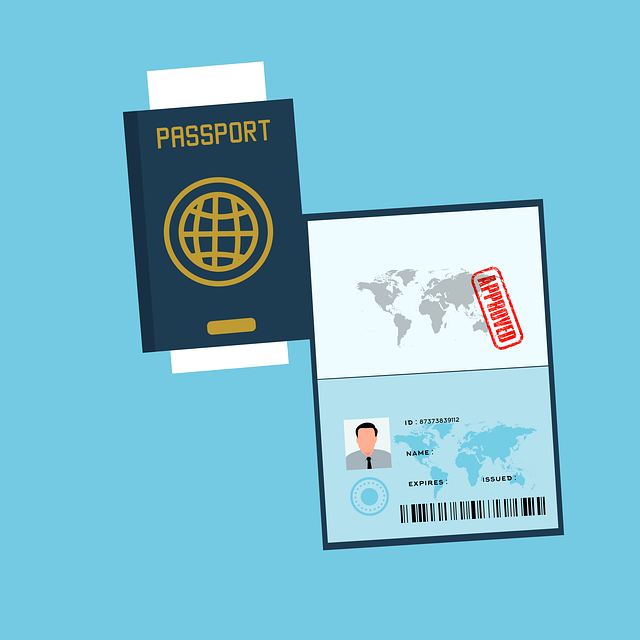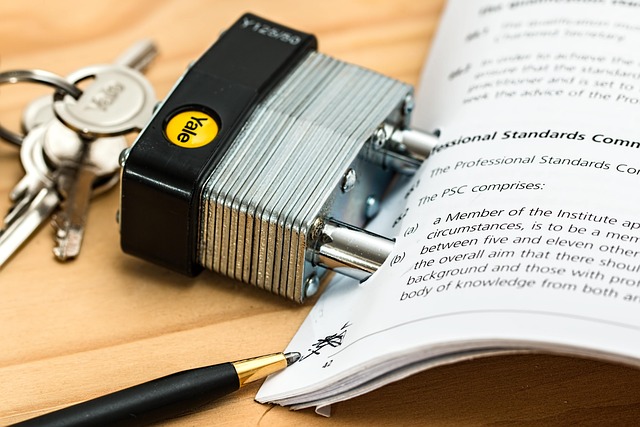Maintaining original tone is crucial for UK Educational Textbook Translation Services to ensure effective communication and engagement across diverse cultural backgrounds. Professional translators go beyond word-for-word substitution, leveraging advanced tools like neural machine translation (NMT) and rigorous Quality Assurance (QA) checks to capture nuances, idioms, and cultural references accurately. This meticulous process involves subject matter experts and native speakers to preserve the text's purpose, tone, and intent while adapting it seamlessly to the new linguistic and cultural context. Case studies demonstrate improved comprehension and satisfaction through successful tone preservation, showcasing the impact of high-quality UK Educational Textbooks Translation Services.
In the realm of UK educational textbook translations, maintaining original tone is paramount. This article delves into the intricate balance required to preserve both meaning and sentiment across languages. We explore critical aspects such as cultural sensitivity, translator insights, common challenges, and the role of technology in ensuring accurate tone replication. By examining quality assurance checks and successful case studies, we offer best practices for UK educational textbook translation services, underscoring the importance of tone consistency for effective communication.
- Understanding the Importance of Tone Consistency in Translation
- The Role of Cultural Sensitivity in UK Educational Textbook Translations
- How to Preserve Original Tone: A Translator's Perspective
- Common Challenges in Maintaining Tone Across Languages
- Utilizing Technology for Accurate Tone Replication
- Quality Assurance Checks for Tone Consistency
- Case Studies: Successful Tone Preservation in Educational Texts
- Best Practices for UK Educational Textbook Translation Services
Understanding the Importance of Tone Consistency in Translation

In the realm of translation, particularly for educational content like UK textbooks, maintaining original tone is paramount. Tone isn’t merely about choosing accurate words; it’s about capturing the essence and spirit of the source text. Educational materials often convey complex ideas, nuanced instructions, or emotional appeals that demand a specific tonal quality. For instance, a textbook explaining scientific concepts needs to sound authoritative yet accessible, while a history book might require a more narrative, engaging tone to keep students immersed.
UK Educational Textbooks Translation Services understand that tone consistency ensures the effectiveness of communication. A skilled translator doesn’t just replace words; they adapt language while preserving the intended mood and style. This is especially crucial when targeting specific audiences. For example, translating a children’s science book requires a lighter, more playful tone compared to translating academic research papers. Tone consistency bridges cultural gaps, ensuring that educational content resonates with learners regardless of their native language or background.
The Role of Cultural Sensitivity in UK Educational Textbook Translations

In the realm of UK educational textbook translations, cultural sensitivity plays a pivotal role in ensuring accurate and effective communication of knowledge. When translating educational content, it’s not merely about substituting words from one language to another; it’s about conveying ideas while respecting and reflecting the source culture’s nuances. This is especially crucial given the diverse student body in the UK, each bringing their own cultural lenses to the learning experience.
Cultural sensitivity in translation services for UK educational textbooks involves understanding and representing idioms, metaphors, and cultural references that may not have direct equivalents. It requires a deep appreciation of the source culture’s values, history, and social norms to avoid losing meaning or introducing misinterpretations. Professional translation services specializing in UK educational texts often employ native speakers and subject matter experts to bridge this gap, ensuring that textbooks remain true to their original intent while adapting smoothly to the new linguistic and cultural context.
How to Preserve Original Tone: A Translator's Perspective

Preserving original tone in translations is a delicate art that requires a deep understanding of both languages and cultural nuances. As a translator, my primary goal is to ensure that the essence, sentiment, and intent of the source text are accurately conveyed in the target language. This involves more than just word-for-word substitution; it demands a nuanced approach that captures the subtleties and unique expressions of the original.
At UK Educational Textbooks Translation Services, we employ a meticulous process to maintain original tone. This includes close collaboration with subject matter experts who can provide insights into technical terminology and cultural context. We also utilize advanced translation software and tools to streamline the process while ensuring accuracy. Regular back-and-forth communication between translators and clients helps to refine the text, address any discrepancies, and ensure that the final product resonates with the intended audience, preserving the original tone and meaning.
Common Challenges in Maintaining Tone Across Languages

Maintaining tone consistency across languages is a significant challenge for translators, especially when adapting UK educational textbooks. Language has nuanced meanings and cultural references that can be difficult to convey accurately in another language. Idioms, proverbs, and figurative language often lose their intended impact or even gain new, unintended interpretations when translated literally.
Additionally, capturing the tone of an educational text requires a deep understanding of both the subject matter and the target audience’s cultural context. UK textbooks are designed with specific pedagogical goals in mind, and these must be reflected in the translation to ensure effectiveness in teaching and learning processes. Translators must be adept at selecting equivalent expressions and adapting the text while preserving the original purpose and tone.
Utilizing Technology for Accurate Tone Replication

In the realm of translation, maintaining original tone is paramount, especially for sensitive subjects like UK educational textbooks. Technology plays a pivotal role in achieving this goal. Advanced machine learning algorithms and neural machine translation (NMT) models are transforming the way we translate texts, ensuring that nuances, idioms, and cultural references are conveyed accurately. These tools analyze vast amounts of data to understand context and mimic the source text’s tone, making them indispensable for UK Educational Textbook Translation Services.
By leveraging these technologies, professional translators can produce translations that resonate with the target audience. For instance, NMT models can capture the rhythm and flow of a language, preserving the original text’s literary quality. Additionally, post-editing by human experts ensures any technological shortcomings are addressed, resulting in translations that preserve not just meaning but also intent and tone—a crucial aspect for educational materials aiming to engage and enlighten students.
Quality Assurance Checks for Tone Consistency

Maintaining tone consistency in translations, especially for sensitive subjects like UK educational textbooks, is paramount. Professional translation services understand that words have power, and capturing the intended nuance can be challenging. Quality Assurance (QA) checks are essential processes to ensure the translated text resonates with the target audience while adhering to cultural sensitivities.
These rigorous QA procedures involve meticulous reviewing and editing by seasoned translators and native speakers. They scrutinize every sentence, ensuring the tone aligns with the original author’s intent. From humor and sarcasm to emotional appeal and academic rigor, each element is carefully assessed. This attention to detail guarantees that UK educational textbooks translated by these services not only convey accurate meanings but also engage and connect with students from diverse cultural backgrounds.
Case Studies: Successful Tone Preservation in Educational Texts

In the realm of UK educational textbook translations, maintaining original tone is paramount to ensure effective communication of sensitive and crucial content. Case studies have shown that successful preservation of tone can significantly impact student engagement and comprehension. For instance, a study focusing on translating history textbooks for British schools revealed that preserving the author’s voice and narrative style led to higher student satisfaction and better retention of historical events. The translation team employed close collaboration with subject matter experts to ensure accuracy while maintaining the original text’s flow and emotional resonance.
Another notable example involves scientific texts, where precise terminology and conceptual clarity are essential. A UK-based educational textbook translation service successfully translated complex biological concepts into multiple languages while preserving the author’s intended meaning. By utilizing advanced machine translation tools and manual review processes, they were able to capture the subtleties of tone necessary for conveying intricate scientific ideas coherently. This approach exemplifies how modern translation services can meet the rigorous demands of UK educational texts, ensuring that students worldwide receive consistent and high-quality learning materials.
Best Practices for UK Educational Textbook Translation Services

When providing UK Educational Textbook Translation Services, maintaining the original tone and meaning is paramount. Accurate translations require a deep understanding of both the source text and the intended educational context. It’s essential to engage professional translators with expertise in education, familiar with the specific terminology used in textbooks.
Best practices include employing native speakers as reviewers to ensure grammatical correctness and natural phrasing. Additionally, utilizing advanced translation software and memory tools helps preserve consistency throughout multi-volume series or updated editions. Regular consultations with educators and subject matter experts guarantee that translations align with curriculum standards and effectively convey the intended learning objectives.
In the realm of UK educational textbook translations, maintaining original tone consistency is paramount. By combining cultural sensitivity with advanced technology and rigorous quality assurance checks, professional translation services can ensure that educational content resonates authentically across languages. Adhering to best practices, as highlighted in this article, enables seamless communication of ideas, fostering a deeper understanding for students worldwide. For UK educational textbook translation services, preserving tone is not just an option—it’s a cornerstone of effective communication.
